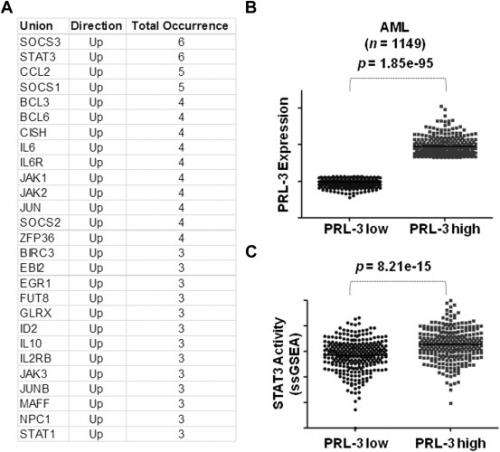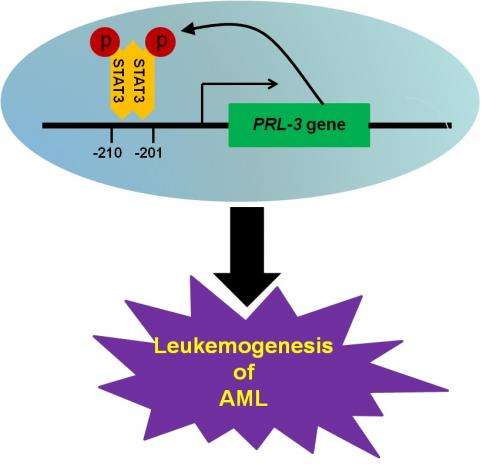Researchers discover new therapeutic target for treatment of acute myeloid leukaemia

A study by the Cancer Science Institute of Singapore (CSI Singapore) at the National University of Singapore (NUS) has found new interactions between two molecules involved in acute myeloid leukaemia (AML), STAT3 and PRL-3, which may offer a new therapeutic target for cancer treatment. The scientists discovered that STAT3, a molecule which has the potential to cause cancer, associates with and regulates the levels of PRL-3, a gene which has been implicated in various types of cancers.
The study was published in the December issue of Experimental Hematology, the official publication of the Society for Hematology and Stem Cells, and also highlighted in the journal's editorial due to its significance in the biology and treatment of blood cancer.
Led by Associate Professor Chng Wee Joo, Deputy Director and Senior Principal Investigator at CSI Singapore and Director of the National University Cancer Institute, Singapore, the research team found a connection between PRL-3 and STAT3 for the first time and showed that the STAT3-PRL-3 regulatory loop contributes to the development of AML. They discovered that STAT3, a transcription factor, binds and promotes the production of PRL-3 in cells. A decrease in STAT3 levels led to a corresponding decrease in the levels of PRL-3, and diminished the malignant properties of leukaemic cells. The scientists concluded that a disruption of this regulatory loop may offer an attractive anti-AML therapeutic strategy. Furthermore, PRL-3 has the potential to be used as a biomarker in personalised therapy for AML patients.
AML is an aggressive blood cancer characterised by an accumulation of dysfunctional blood cells in the body, and AML diagnosis is often associated with poor survival. The research group was the first to report that the PRL-3 protein is overexpressed in 47 per cent of bone marrow samples from AML patients. In addition, cellular levels of STAT3 were found to be elevated in about 50 per cent of AML cases.
In this study, Assoc Prof Chng and Dr Zhou Jianbiao, who is Research Fellow at CSI Singapore, as well as their team created a core STAT3 signature by analysing a large amount of datasets in the literature. They found that STAT3 core signature was significantly enriched in AML cases with high PRL-3 expression.

Assoc Prof Chng said, "Earlier studies on PRL-3 have been conducted in other cancers, but only in recent years has attention been turned to the significance of PRL-3 in blood cancer. Previously, the mechanism by which PRL-3 is regulated in AML has also not been fully elucidated. This study reveals a novel connection between these two important oncogenes for the first time, and also shows that the STAT3-PRL-3 regulatory loop contributes to the pathogenesis of AML."
The team is currently looking into methods to target the STAT3-PRL-3 pathway in AML, which could open up new avenues to treat AML patients with high expression of PRL-3 and offer an attractive anti-leukaemia therapeutic strategy.
More information: "Phosphatase of regenerating liver-3 is regulated by signal transducer and activator of transcription 3 in acute myeloid leukemia." Experimental Hematology, Volume 42, Issue 12, December 2014, Pages 1041–1052.e2 DOI: 10.1016/j.exphem.2014.08.001
















